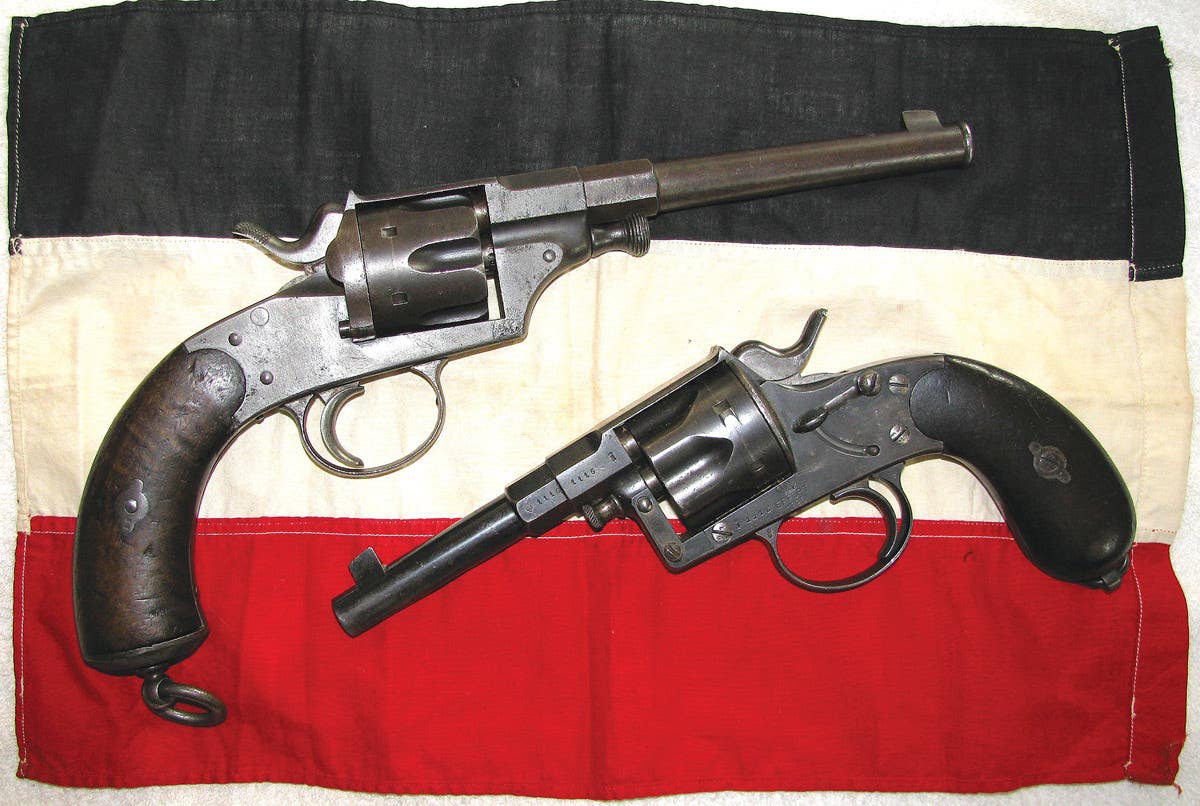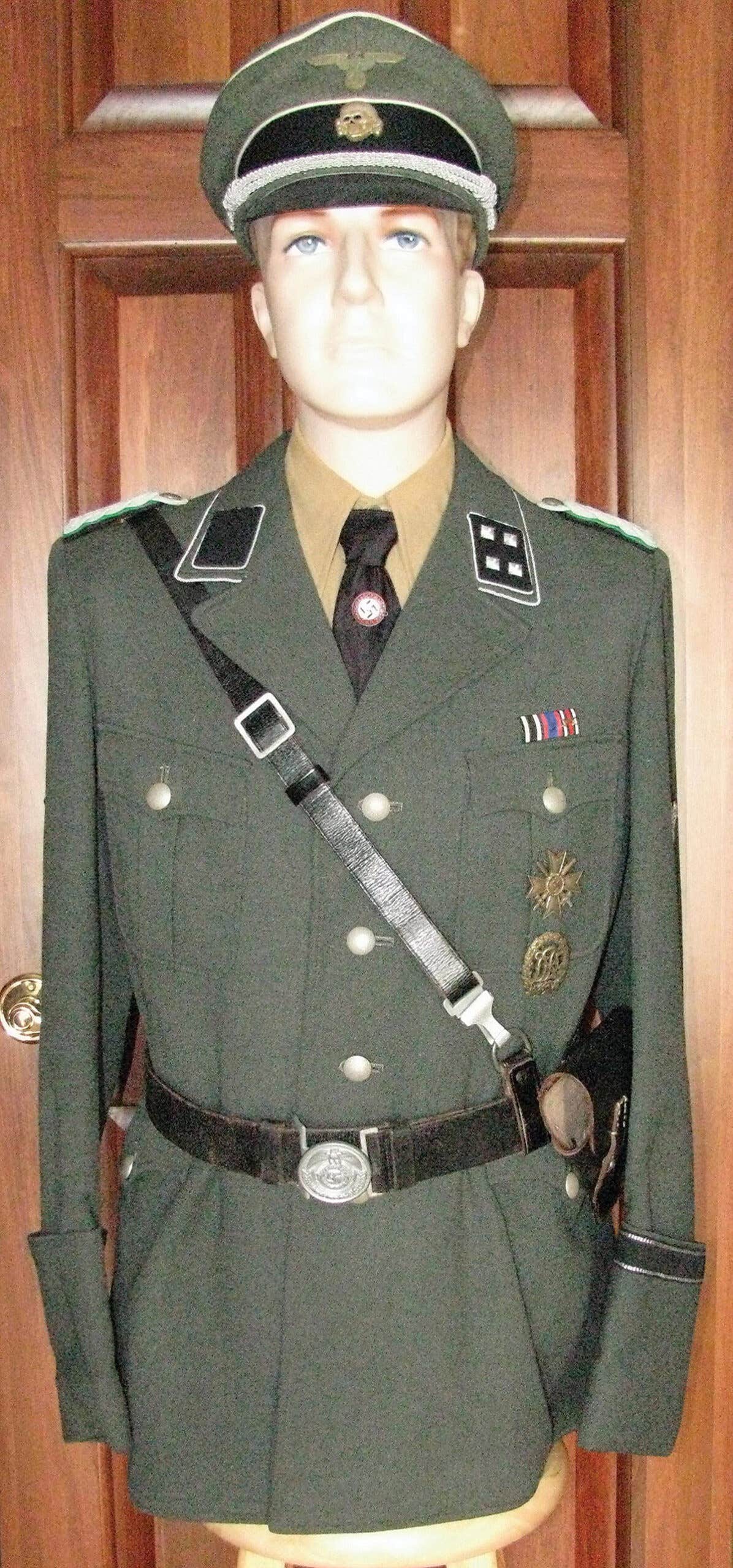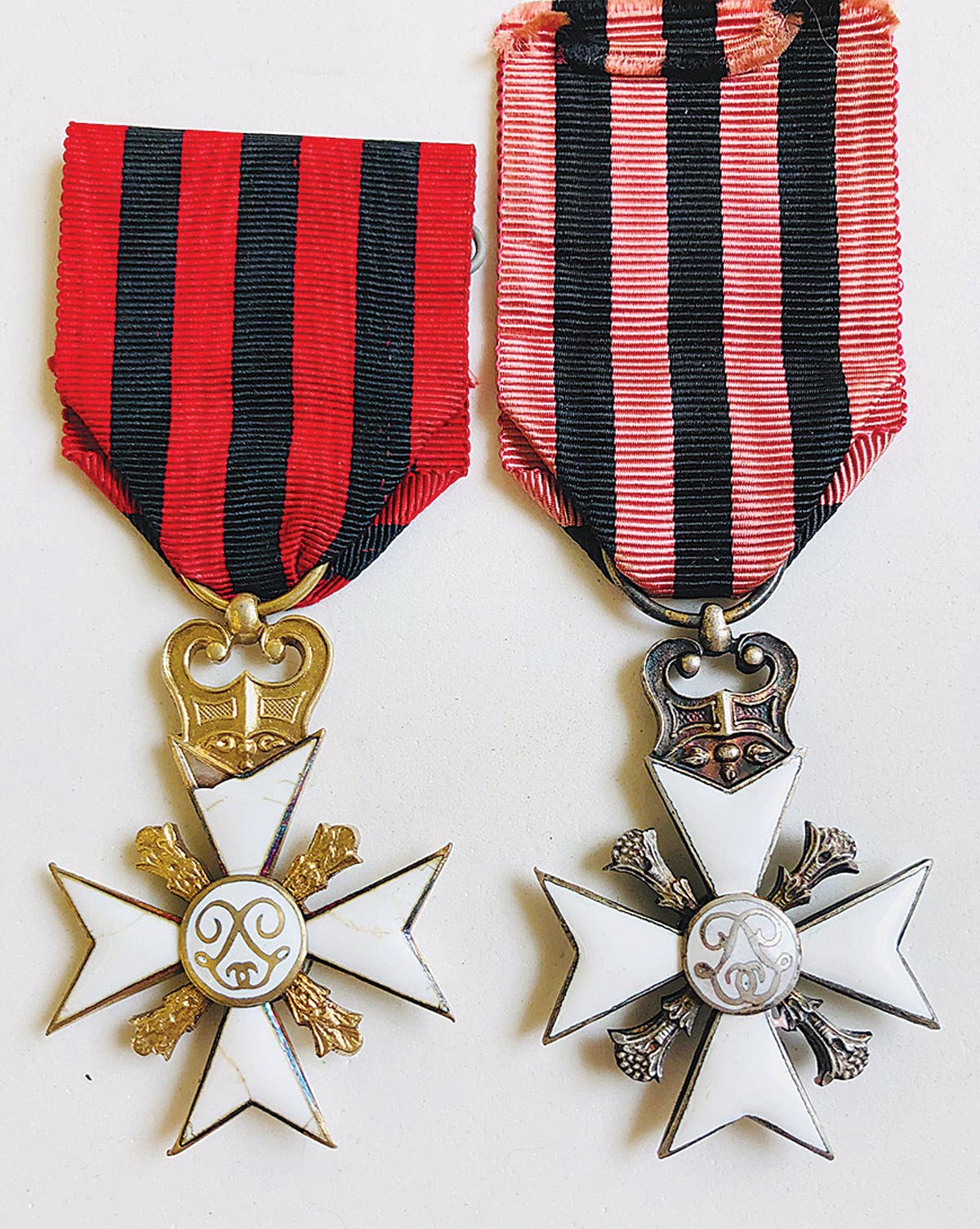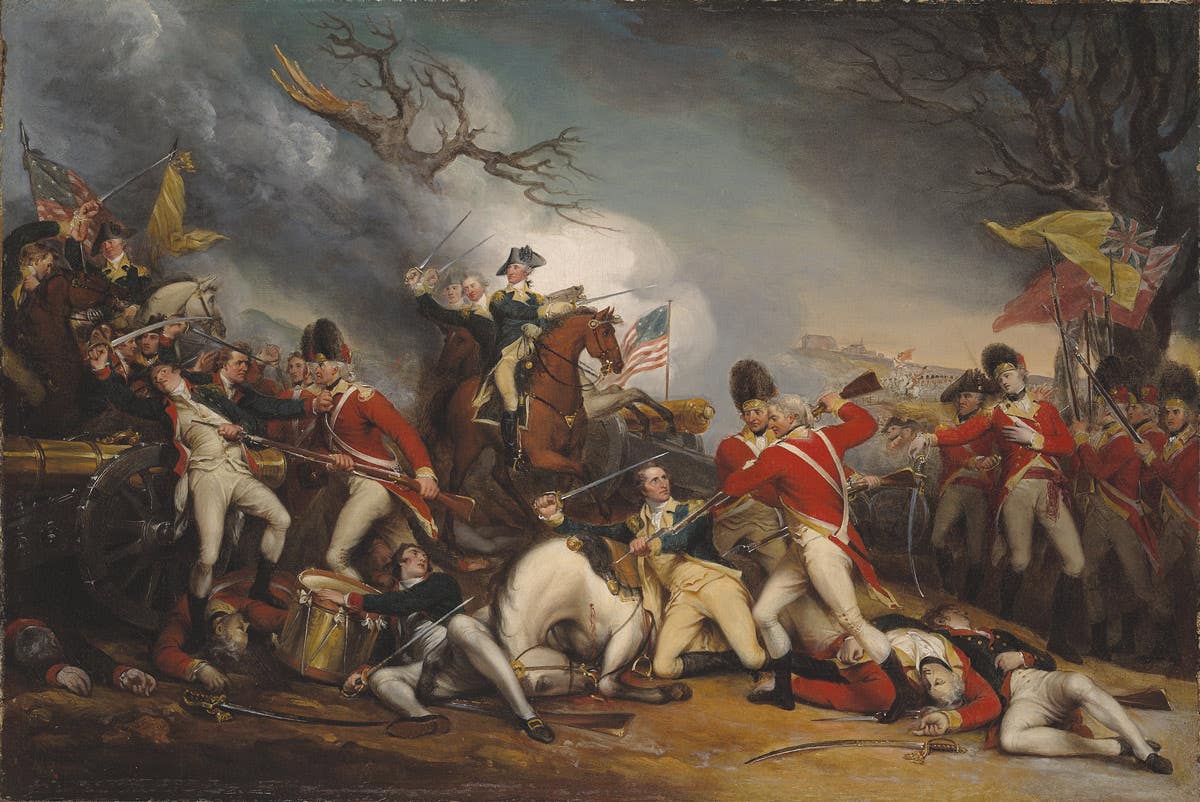Collecting WWI: Unique Non-Wearable Awards of the Great War
Collectors have found that the volume of medals awarded for military service expanded exponentially at the end of WWI by a variety of countries. Not only did the volume increase, but the variety of medals by each country in terms of design created amazing collecting opportunities.
Collectors have found that the volume of medals awarded for military service expanded exponentially at the end of WWI by a variety of countries. Not only did the volume increase, but the variety of medals by each country in terms of design created amazing collecting opportunities.
A classic example of a non-wearable award was created by Great Britain called the “Dead Man’s Penny”. Correctly called the “Memorial Plaque”, it was issued to the next of kin of all British Empire Service personnel who were killed as a result of the war. The large 4.72-inch medallion continued to be issued into the 1930’s for those who died as a result of the war. The design includes an image of Britannia holding a trident and standing with a lion. In her outstretched left hand is an olive wreath about a tablet bearing the deceased’s name in raised letters. The names do not include rank since there were no distinctions between sacrifices of those who died.
In the United States, the town of Manchester, N.H., awarded a similar medallion for those from the town who died as a result of their WWI service. This 3.75-inch (96mm) bronze medallion shows Lady Liberty holding a U.S. shield in her left hand and a palm branch in her right hand over the dead soldier lying on rising steps in front of a memorial flame. The dates 1917-1919 are seen at the bottom. Our example is mounted on a wooden plaque, so it is obviously a non-wearable award. That same veteran was also awarded the State medal of New Hampshire as well as the town medal from Manchester. While many local WWI medals are found with ribbons, appropriate brooches and planchets of various designs in bronze, silver and even gold for wear on uniforms we will restrict our story to only non-wearable awards. Also for the sake of brevity, our examples will be that of the United States.
Most of the following examples will show non-wearable awards simply for service in the WWI. One of the largest known table medals was issued by Orange County, Calif. It is a heavy bronze 75mm medal, 6mm thick. The obverse has an eagle with outstretched wings behind a scroll reading “World War Heroes”. Below is “Victory” above a US shield with the dates 1917-1919. Flanking the shield is a soldier and sailor. Equally impressive is the reverse of the medal depicting a landscape with oil wells and orange trees. The issuing agency is indicated at the bottom reading “presented by Orange County War Service Recognitions Association”. While there is no estimate of the number of medals issued, it is assumed the cost of dies and production of the medal must have been considerable.
Another large medal is the Williams Medal. This large 72mm bronze medal was issued by Williams College, a liberal arts institution in Williamstown, Mass., that was founded in 1793. The medal was awarded to both students and faculty who served in WWI. The 70mm obverse depicts soldiers charging “over the top” from a trench. The right center is inscribed “For/Humanity/1918”. The reverse has a Latin inscription which translated states “Through the generosity of E. Williams Soldier”. The center image is of Colonel Ephraim Williams in Continental uniform on horseback. The college was funded by the estate of Ephraim Williams. Along the bottom is inscribed “The Williams Medal”. Some medals are found with the name of the recipient on the edge of the medal.
Even various United States companies were known to issue World War I medals to their employees who served in the war. One such company was the American Car and Foundry Company that manufactured railroad rolling stock. The company also produced artillery gun mounts and ammunition, submarine chasers, various boats and railway cars to support the Allies. The 83mm bronze table medal is 4mm thick. The obverse shows a central robed figure with a staff in her right hand and a palm branch in her left hand. The rising sun behind the Statue of Liberty has the inscription “For Service Faithfully Rendered”. The equally impressive reverse depicts an iron worker with an upraised hammer about to strike an anvil on which a serpent is coiled around a German helmet and the dates 1917-1919. The edge is marked “Gorham Co. Bronze”.
Our next example is one of the more unusual issued examples in that it is in the form of an 80mm x 50mm rectangular, bronze presentation medal. It was issued for death in service by Ingham County, Mich. The medal has a robed figure of Victory at the left with an eagle perched on a shield with the seal of Ingham County in the center. Below the seal is a scroll inscribed “World War 1917-1918”. Below that is the name of the recipient Harold L. Burdick with a subsequent proclamation below. The final line states “Presented by the people of Ingham County”. The reverse is plain and no maker mark can be found. Ingham County is located in southern central Michigan and is the home of Lansing, the state capital and Michigan State University.
Possibly by coincidence another rectangular WWI Service medal was issued by Jackson County, Mich., which is actually adjacent to Ingham County. The medal is also an 80mm x 50mm rectangular medal as was the Ingham County medal, but is made of aluminum and uses the longer dimension as the horizontal axis. The medal is attributed to Carl W. Wenger and issued for WWI service. The obverse is inscribed “Presented by the County of Jackson Michigan in grateful appreciated of the services rendered in the World War 1917-1918”. A soldier and sailor are seen at the left and right. The reverse is blank with no observable maker mark. It looks much like an early charge card that can be carried in the recipient’s wallet.
With our two examples of rectangular Michigan medals, another Michigan example is that of the City of Detroit awarded to its resident soldiers who were killed in action. Returning to the more common circular 70mm bronze medal, it is presented in a felt lined leather case. The City of Detroit led by George Booth, the editor of the Detroit News, architect Albert Kahn, and Clyde Burroughs of the Detroit Museum of Art established a Detroit Welcome Home committee. While most returning soldiers received certificates and rings for service, a special medal was designed by the sculptor Paul Manship given to the nearest of kin of those who gave their lives during WWI. The 70mm table medal depicts a winged female figure cradling a sword and palm branch with the radiant sun in the background. The inscription “Vixit Vivit Vivet” translates to (Lived, Conquered, Shall Live). The reverse is equally striking with a scroll inscribed “In Memory of One who Died in the Cause of Freedom and Humanity”. An eagle holding a laurel wreath is perched atop a cannon and ball. “Presented by the City of Detroit” in large letters is found around the outside edge.
Just as Michigan had several examples of non-traditional medals for service, so did the state of New York. Both of our next examples are smaller 50mm table type medals. One is from Mount Kisco, N.Y., located in Westchester County, close to New York City. With a 1920 population of 3,994, it is estimated only 164 of these medals were issued. Identical in size is the medal issued by Waverly, N.Y. This small village is located on the New York-Pennsylvania border and located southeast of Elmira, N.Y. With a 1920 population of 5,270 people, it is estimated only about 220 residents served in WWI. While identical in shape and size, the Mt. Kisco Medal depicts the figure of Liberty holding a shield and staff. Around the edge is the inscription “That the World Might be Safe for Democracy”. The Waverly obverse also shows a female figure of Victory resting on a sword hilt with the left hand extended over a tablet inscribed “Presented by the Village of Waverly, New York. The reverses of our examples while similar with a horizontal tablet to engrave the recipient’s name, the Mt. Kisco medal has a prominent vertical sword with the inscription “Sons of Mount Kisco, New York 1917-1919”. The Waverly example shows the words “Honor & Service”. Both show a laurel wreath as part of the design.
An interesting grouping of non-wearable awards was awarded to the Chaplains of WWI. Each of our examples is found in the circular bronze shape but varying in diameter and design. Illustrated examples range from a 70mm award for the Chaplains of the American Army and Navy (top left) and the 50mm award for the Chaplains of the Lutheran Church (top right), the 50mm award of the Chaplains of the Presbyterian Church (Bottom left) and the 63mm award of Catholic Chaplains. The reverses reveal the issuing body that designed and awarded the medals. The Chaplains of the Army & Navy were issued by the General War Time Commission, the Lutheran Chaplains by Service Commission of the Lutheran Council. The Presbyterian Chaplain award was commissioned by the Presbyterian Church. The Catholic Chaplains award was from the Supreme Council of the Knights of Columbus.
An example is a high relief table medal issued by Jefferson County, Ohio. The county’s main city is Steubenville, a short drive from Pittsburgh. The 55mm circular medal, 4mm thick bronze medal is seen with a central figure of a female figure holding a sword in her right hand and a laurel branch in her left arm. The upper edge is inscribed “COMMEMORATION OF PEACE WITH VICTORY.” A soldier and sailor kneel at the foot of the female figure on a shield with the seal of the United States. It was made and designed by the Greenduck Company, located in Chicago. Examples of this design were known to be issued by several locations in the United States. They include Jefferson County, Ohio as well as Redondo Beach, Calif., and Hancock County, W.V. The obverse of the medal is the same for all locations, and while the reverses are similar, a large rectangular tablet allows unique identification for any issuing location. A pair of shields found at the top has the dates 1917-1919 and the inscriptions “For Service in the Great War” at the bottom.
Even well known clubs issued similar presentation medals to their members who served in WWI. One dramatic example is that of the New York Athletic Club. The club’s existence was instituted as a result of a New Yorker taking two gold medals in the inaugural modern Olympic Games in 1897 and formed to offer greater participation by Americans in1900 in Paris in which 22 NYAC members claimed 22 medals. At the end of WWI the club awarded medals to members who served. The NYAC medal is a 63mm round table medal with a soldier and sailor at port arms flanking a United States shield. Above the shield is an eagle with outspread wings with rays of sun behind. 19 stars form a border around the edge. The reverse shows a closed laurel wreath with a winged foot at the bottom. Also note the dates 1917-1918 in the inscription.
Another WWI presentation medal was issued by the Washington D.C. Gridiron Club. Its large 70mm bronze medal uses a theme of Lady Victory with soldiers to the left carrying rifles and sailors loading a shipboard cannon to the right. The Gridiron Club, founded in 1885 is the oldest journalistic club in Washington, D.C. and is best known for its annual dinner usually attended by the President of the United States. Our example shows a beautifully designed reverse bearing heraldic symbols of the victorious nations and the date of its annual 34th Peace Dinner, December 13, 1919.
While many examples of non-wearable are perhaps yet to be discovered, we conclude with two of the most unusual examples given by national lodges to the members of their organization who served in WWI. A striking example is the El Riad Temple of the Ancient Arabic Order of the Nobles of the Mystic Shrine (AAONMS) located in Sioux Falls, S.D. It is seen as a large rectangular tablet measuring 48mm x 81mm. The obverse depicts a sailor and soldier at port arms on each side of a building-shaped shield surmounted by an eagle with seals of the United States and the Shrine. Below the shield is a scroll reading World War with the dates1917 & 1918. An inscription reads “presented to noble G.E. Hanson/by Riad Temple A.A.O.S.M.S. Sioux Falls S.D. May 19th 1920 in commemoration of his military or naval services in the World War”. The medal is quite heavy and probably was issued in a case. The reverse contains the names of the officers of the Sioux City lodge.
Our final example is definitely the most unique of all our examples. It was issued to those members of the Benevolent and Protective Order of the Elks (BPOE), Brooklyn Lodge No. 22. This is one-of-a-kind design in the form of a bronze case that is hinged at the top and can be opened to hold small papers or perhaps business cards. The bronze and enameled case measures 35mm x 52mm. The design sports a blue enamel star under a curtained set of columns with Brooklyn Lodge at the top. Below the star is an Elk above a scroll inscribed B.P. No. 22 OE. The reverse of the medal has an ornate tablet with FIDELITY/BROTHERLY LOVE/CHARITY/JUSTICE along each side. The center contains the inscription “presented to Brother James H. Harney March 30, 1920 in recognition of honorable service rendered in the World War 1917-1919”.
While additional examples can be found and perhaps yet to be discovered, it is hoped the story will be useful to collectors of non-traditional WWI medals issued for service in the Great War.
David Burrows is a retired educator and life long military collector. He started collecting as a teenager. David was a physics teacher for 37 years with the Pittsburgh Public schools. He is a frequent contributor to Military Trader as well as the OMSA Journal. His other passion with British cars has resulted in many feature stories both in US publications as well as international publications over the last 30 years.







